
What's shining in the night sky this summer? Check it out!
Here's your guide to what you can see on those long summer nights!
From planets shining brightly, to solar eclipses, and the yearly Perseid Meteor Shower, there are some great skywatching and stargazing events coming up this summer.
Here's what to watch for this summer:
All Summer Long - Jupiter and Saturn frame The Milky Way
July 2 - Total Solar Eclipse across the southern hemisphere
July 9 - Saturn Opposition
July 13 - Jupiter conjunction with the Moon
July 16 - Partial Lunar Eclipse across Europe, Africa and Asia
July 16 - Saturn conjunction with the Moon
July 28-29 - Peak of Delta Aquariid meteor shower
July 31 - Rare "Black Moon"
August 9-11 - Moon conjunction with Jupiter and then Saturn
August 12-13 - Peak of the Perseid meteor shower
September 6 - Jupiter conjunction with the Moon
September 8 - Saturn conjunction with the Moon
September 23 - Equinox
ALL SUMMER LONG - JUPITER AND SATURN FRAME THE MILKY WAY
If you find yourself outside, under clear, dark skies this summer, scan the heavens until you locate the two brightest 'stars'... they should be only a short distance from one another, on any particular night.
What you're seeing are the two largest, most massive planets in our solar system - Saturn on the left, and Jupiter on the right.
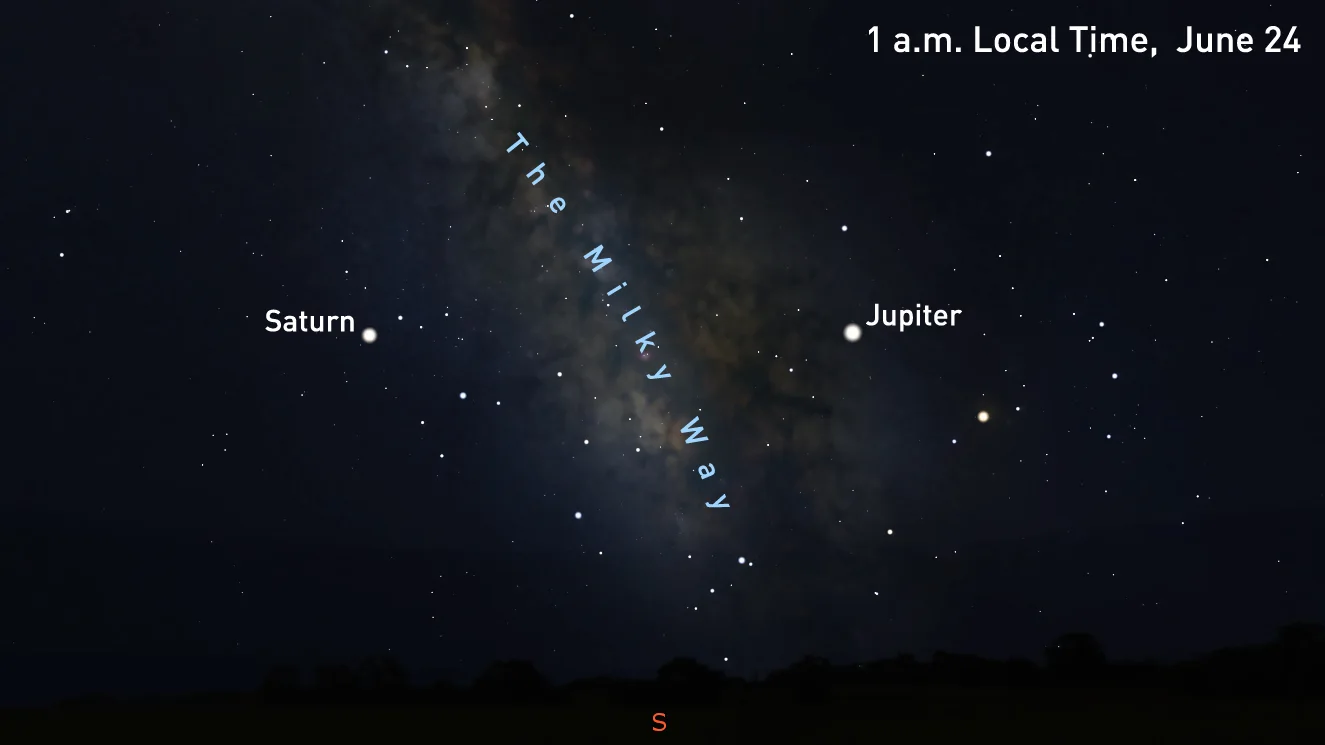
The view of the night sky at 1 a.m. local time, on the night of June 23-24. Credit: Stellarium/Scott Sutherland
If you've just stepped outside, or if you're out in the city, with the abundant light pollution from streetlights and signs washing out the night sky, these two objects are likely all you're going to see in that sector of the sky.
If you get out of the city, though, to stand under a clear, dark sky, and give your eyes some time to adjust to the dark, you'll start to notice that there's something in between the two planets.
It's the Milky Way!
This galaxy of hundreds of billions of stars stretches from the horizon towards the zenith (directly above), and it tracks from the eastern horizon to the southern horizon to the western horizon, throughout the night.
All summer long, Jupiter and Saturn will flank the Milky Way!
Unlike the usual note included here, which tells you the best time to see it, the best time NOT to bother looking is from July 10-17, and August 8-15, due to the bright Moon washing out the light from the Milky Way.
JULY 31 - BLACK MOON OVER NORTH AMERICA
We've all heard of a Blue Moon, but have you heard of its opposite - the Black Moon?
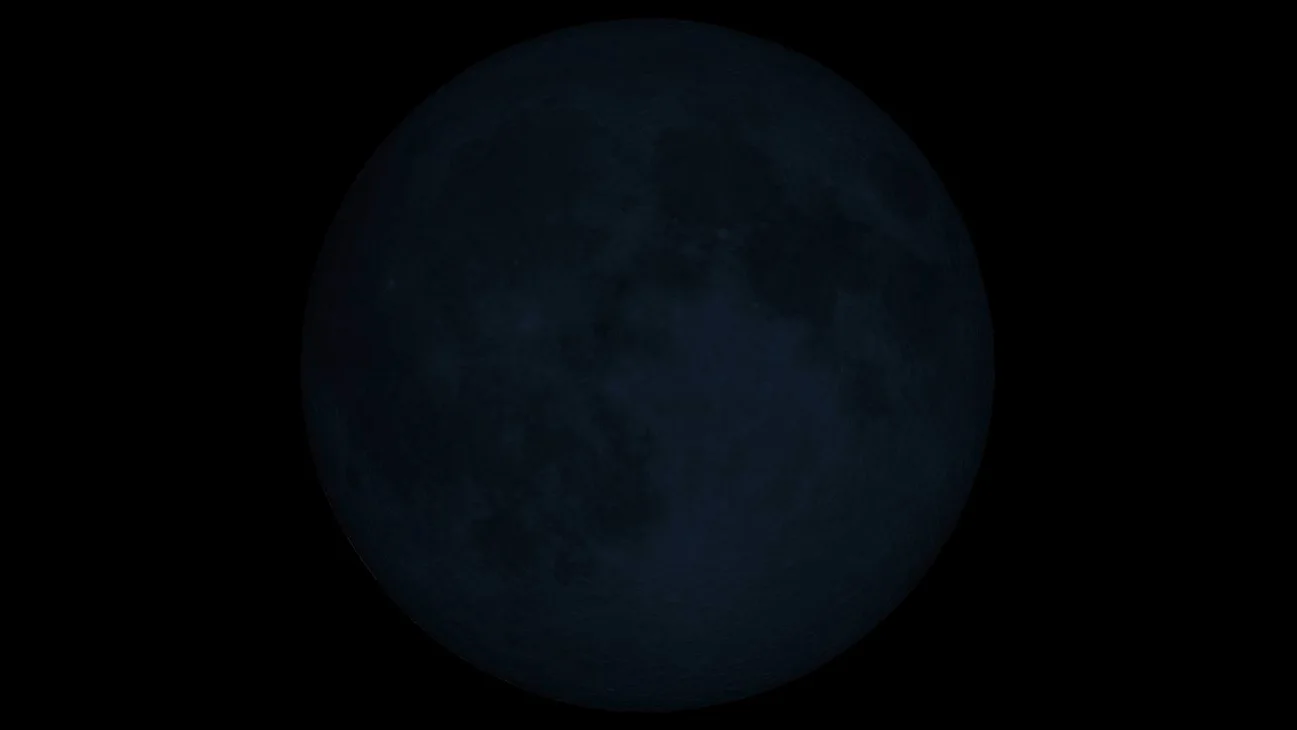
The July 31 New Moon. Credit: NASA Goddard Scientific Visualization Studio
A popular definition of a Blue Moon is the second of two Full Moons that happen in the same month. We saw one of these during the "Super Blue Blood Moon" lunar eclipse, on January 29, 2018.
The Blue Moon's counterpart, the Black Moon, happens in the same way, but instead of Full Moons, we're counting New Moons.
One catch to this: noone is going to see it.
A New Moon happens when the Moon lines up between the Earth and the Sun, so it becomes lost in the glare of the Sun's light. The only time you can ever see a New Moon, without some serious astronomical equipment, is during a solar eclipse, when the Earth, Moon and Sun line up perfectly.
If you're anywhere else in the world, based on the timing of this event, you'll have to wait until August 30 for your Black Moon.
Note: Of course, "two Full Moons in a calendar month" is the incorrect definition of a Blue Moon. The original. correct definition is "the third Full Moon in a season with four Full Moons". So, for a Black Moon - if we actually consider it to be 'a thing' - should really be the third New Moon in a season with four New Moons. The last time we saw one of those was in the Summer of 2017, and the amazing Total Solar Eclipse that passed over the United States on August 21 of that year was actually a Black Moon Eclipse! The next time we see this will be in the summer of 2020!
AUGUST 9-11 - MOON CONJUCTION WITH JUPITER AND THEN SATURN
On the nights of August 9 to 11, look up to see the bright gibbous Moon as it skirts past Jupiter and then Saturn in the night sky!
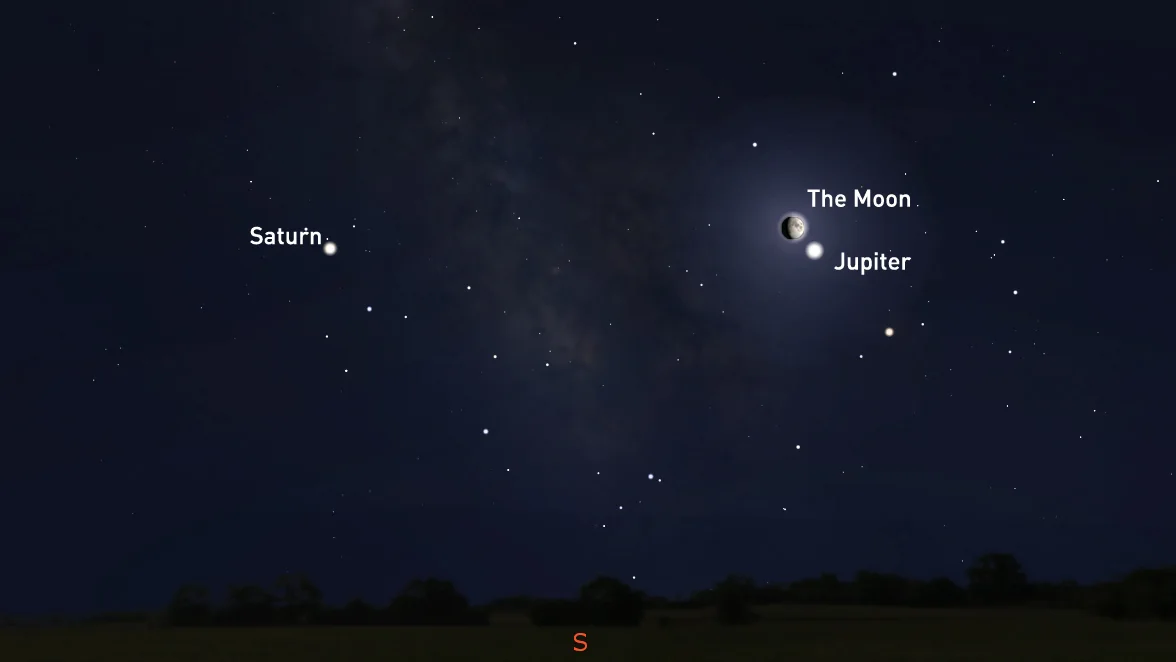
The view of the night sky at 10:00 p.m. local time, on the night of August 9. Credit: Stellarium/Scott Sutherland
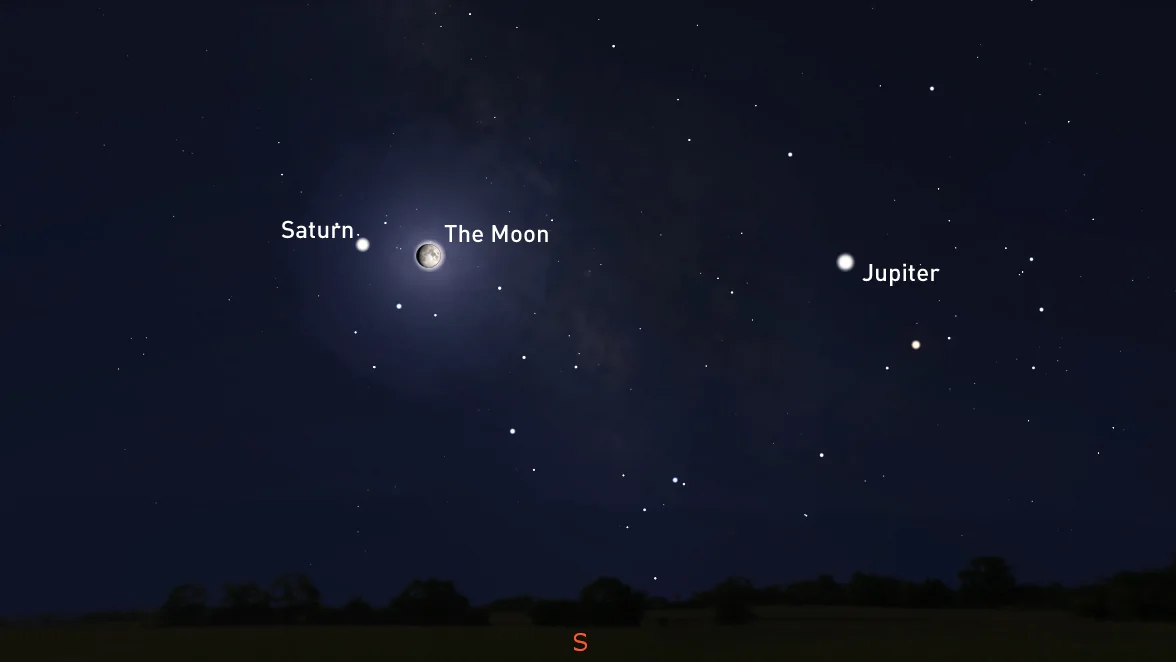
The view of the night sky at 10:00 p.m. local time, on the night of August 11. Credit: Stellarium/Scott Sutherland
Each of these nights, the Moon will appear stationary in the night sky, relative to these two giant planets, but each time they rise, the Moon will have shifted over - from Jupiter to roughly in-between the two, and then to near Saturn the night after that.
Watch for a repeat of this starting on September 6!
AUGUST 12-13 - PEAK OF THE PERSEID METEOR SHOWER
See above!
SEPTEMBER 23 - EQUINOX
On the morning of September 23, at exactly 7:50 UTC (3:50 a.m. EDT), the Sun will "cross over" the equator headed from north to south.
This is the Equinox, which marks the transition from Summer to Autumn for those in the northern hemisphere, and Winter to Spring in the southern hemisphere.
LOOKING BACK AT WHAT WE HAVE WE ALREADY SEEN
July 2 - Total Solar Eclipse
Nearly two years ago, a spectacular solar eclipse was visible across the United States and Canada. This year the southern hemisphere, and especially Chile and Argentina, saw a total solar eclipse of their own.
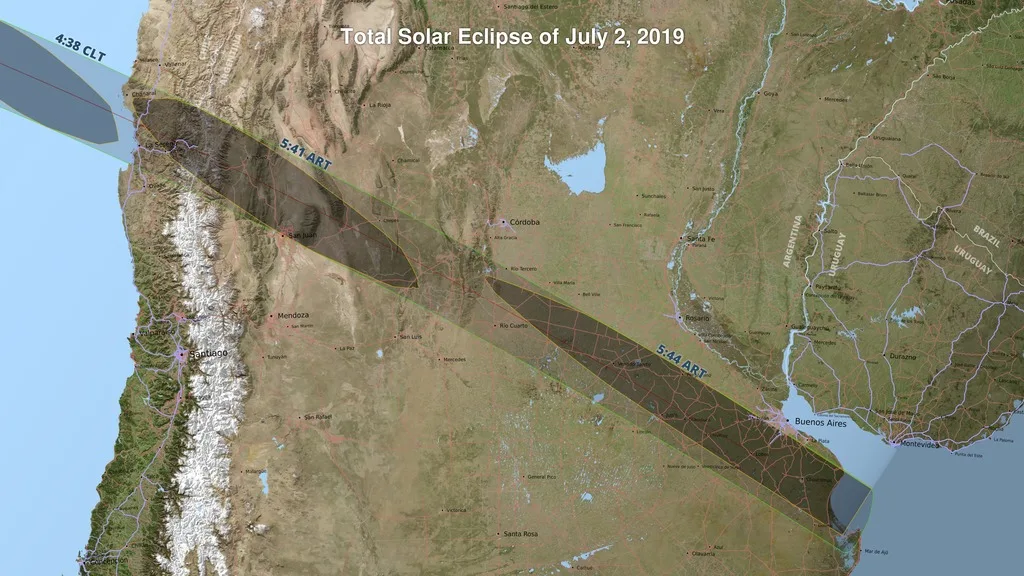
A map of Chile and Argentina showing the path of totality for the July 2, 2019 total solar eclipse. Credit: NASA's Scientific Visualization Studio
While this eclipse was not directly visible from anywhere in Canada, millions watch it from central Chile and Argentina, as Santiago and Buenos Aires are either in the path of totality or tantilizingly close.
Even more saw it via the internet, with social media lit up with images and videos, and thanks to TimeandDate.com's livestream!
Watch a replay of the July 2, 2019 total solar eclipse, below:
What happened?
On July 2, 2019, the Earth, Moon and Sun lined up in such a way that the shadow of the New Moon swept across Earth's surface.
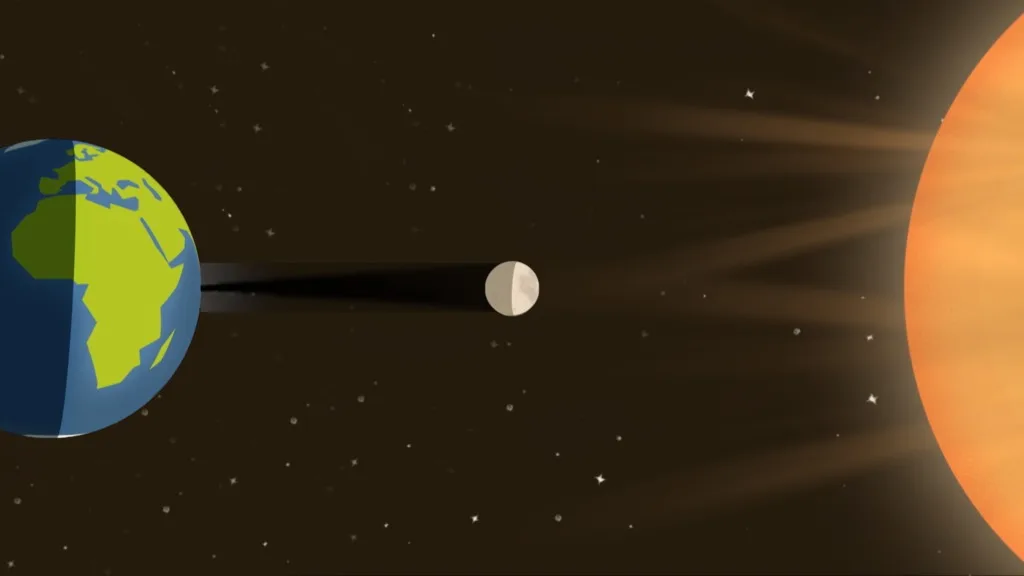
The New Moon passes directly between the Earth and the Sun, casting its shadow upon the Earth. Credit: NASA's Goddard Space Flight Center
From our point of view here on Earth, however, it appeared as though the Moon was swallowing the Sun, only to spit it back up, whole and intact, by the end of the event!
Starting at just before 1 p.m. EDT, the Moon began passing in front of the Sun, as viewed from locations across the South Pacific, and around 2 p.m. EDT the Moon's umbra - the dark focal point of its shadow - began tracing the path of totality across the ocean, towards South America.
It was right around 3:30 p.m. EDT that sites along coastal Chile started to see the eclipse, and from there, the eclipse trekked its way across Chile or Argentina, ending around 4:45 p.m. EDT.
July 9 - Saturn Opposition
Tuesday, July 9, 2019 was a special day for Earth, as we lined up directly between the Sun and Saturn, in an alignment known as as Opposition.
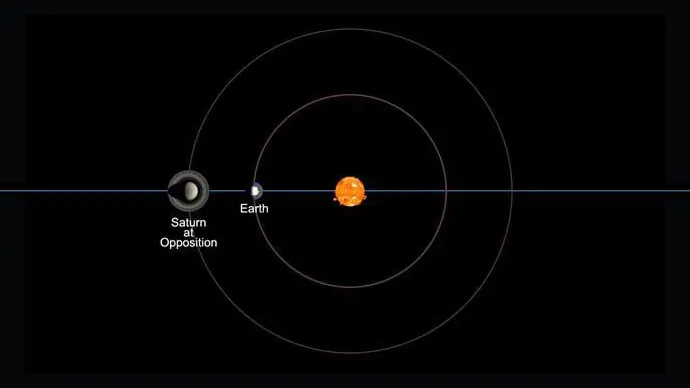
Both the size and distance scales of this simple "orrery" diagram of Earth, Saturn and the Sun are out of proportion, however it does accurately represent their relative positions during the July 9 Opposition. Credit: NASA
Opposition occurred at 1 p.m. EDT on July 9, which meant that that on the nights of both July 8 and July 9, the planet was up all night long, big and bright in the sky. The brightest we'll see it for all of 2019, in fact!
Saturn, along with Jupiter, is visible from nearly everywhere, including the deepest urban sprawl, where light pollution blocks out nearly every other light in the night sky.
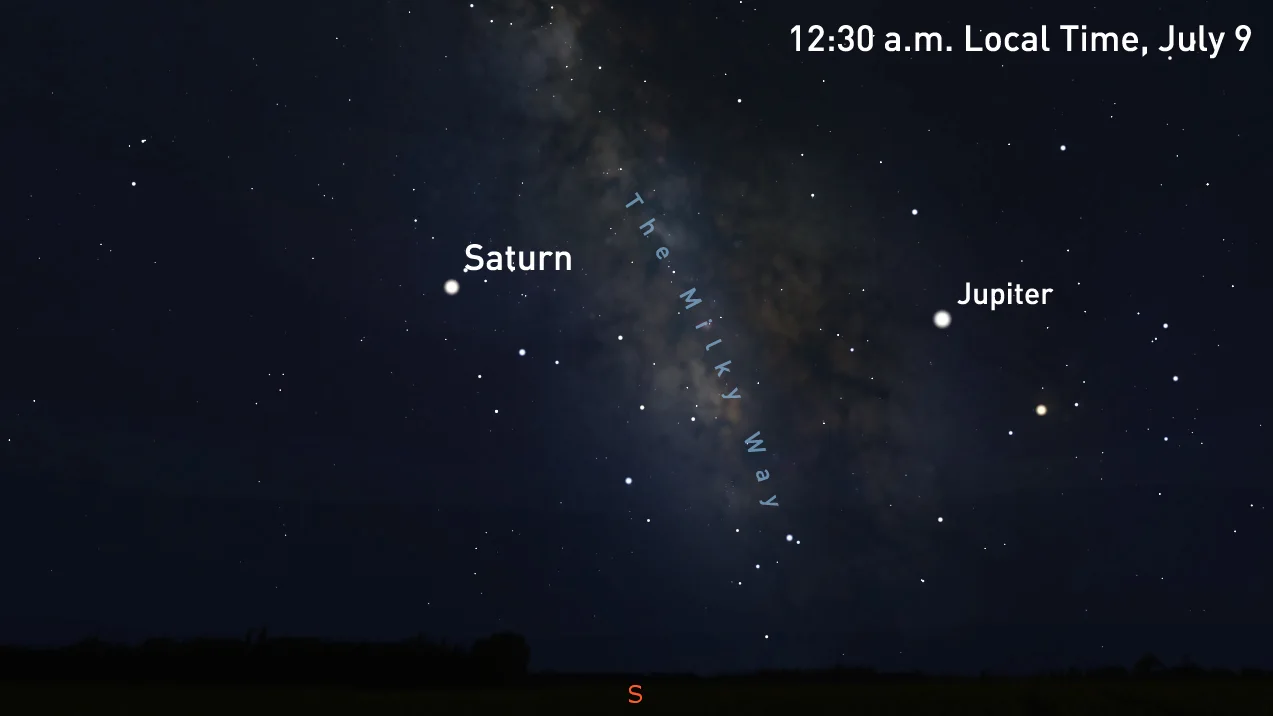
The view of the night sky at 12:30 a.m. local time, on the night of July 8-9. Credit: Stellarium/Scott Sutherland
If you have a reasonably powerful telescope, say a standard 6" (150mm) reflector, you can even point it at Saturn to see its rings, and quite likely its six largest and brightest moons - Tethys, Mimas, Enceladus, Dione, Rhea and Titan.

Saturn and its brightest moons. Credit: Stellarium/Scott Sutherland
Although binoculars are a good way to see Jupiter, its cloud bands and its four largest moons, with Saturn at over twice the distance away, binoculars will allow you to see the planet, its rings and perhaps only Titan.
July 13-14 - Jupiter conjunction with the Moon
On the night of July 13-14, look up in the sky to see Jupiter close to the nearly-full Moon.
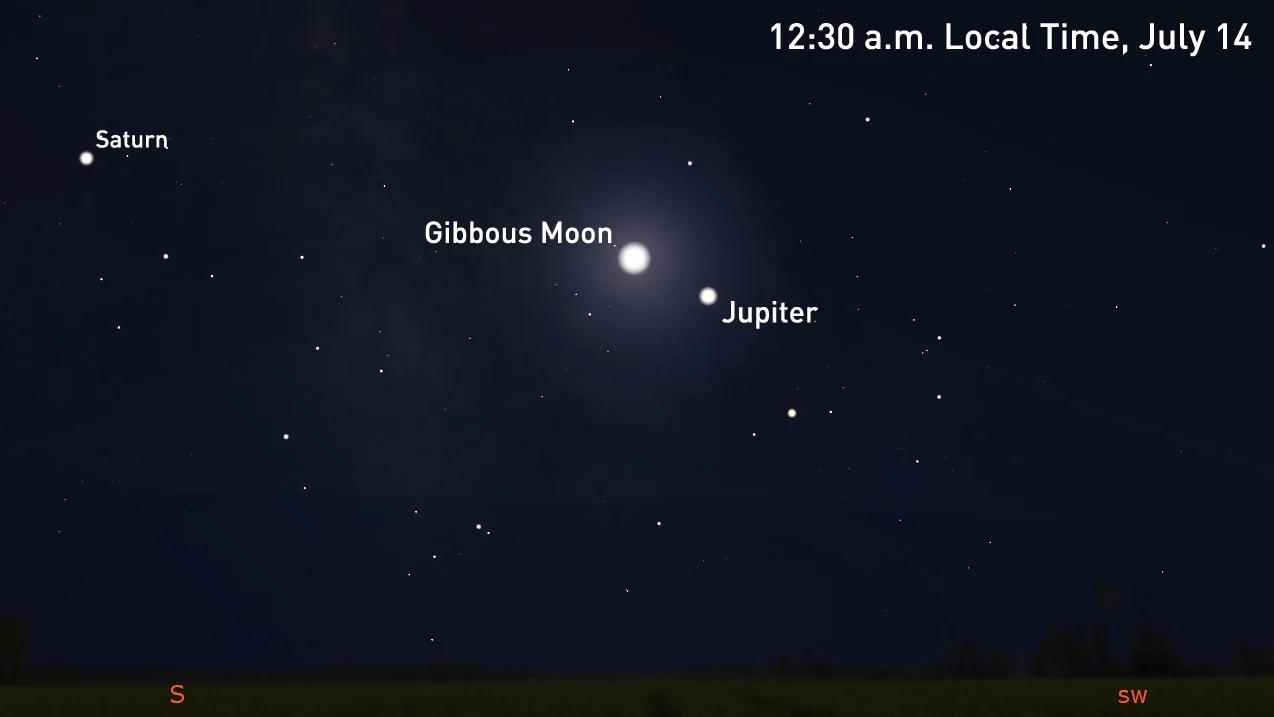
The view of the night sky at 12:30 a.m. local time, on the night of July 13-14. Credit: Stellarium/Scott Sutherland
Watch for a repeat of this on August 9, and September 6!
July 15-16 - Saturn conjunction with the Moon
Two nights later, on the night of the Full Moon, it's Saturn's turn!
Watch after sunset as the Moon and the ringed planet both rise, close together, in the southeast, and then arc across the southern sky together, and getting progressively closer to one another, throughout the night.
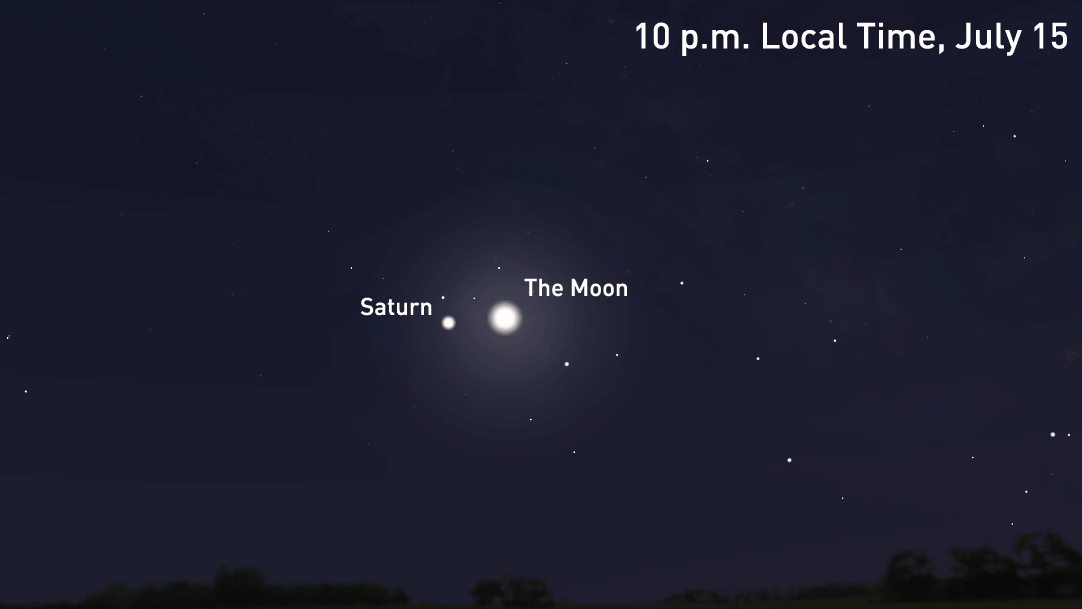
Saturn and the Moon track across the sky on the night of July 15-16, 2019. Credit: Stellarium/Scott Sutherland
For some on this night, notably those viewing from the South Pacific or central portions of South America, will actually see the Moon "occult" Saturn - that is, Saturn will actually disappear behind the Moon as they track across the sky.
Watch for a repeat, with the potential for occultation, on both August 12 and September 8!
July 16 - Partial Lunar Eclipse
The second lunar eclipse of 2019 takes place on July 16.
Unfortunately, unlike January's Super Blood Wolf Moon, it will not be super, it will not technically be a blood moon (since it won't be completely immersed in Earth's umbral shadow, and thus will not turn completely red), and it won't be visible from anywhere in North America.
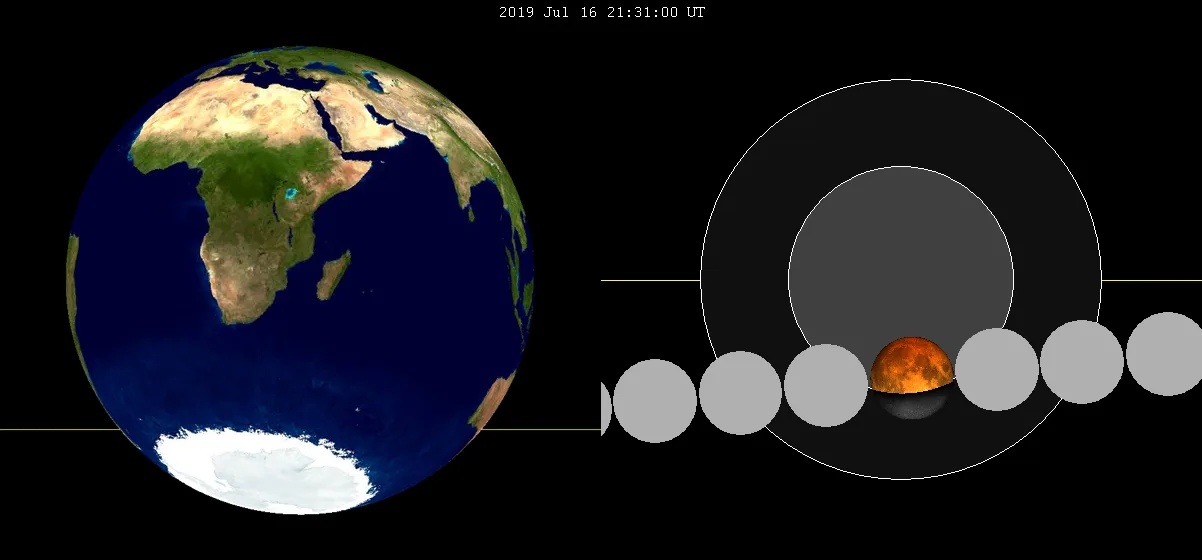
On the left, the areas of the world are shown that this lunar eclipse will be visible from, and on the right, the path of the Moon through Earth's concentric shadows, showing that only part of the Moon will turn red during this eclipse. Credit: NASA
Undoubtedly, this eclipse will also be streamed, live online. Come back closer to the date, to see where you can watch.
July 28-29 - Peak of Delta Aquariid Meteor Shower
The Delta Aquariid meteor shower is not one that is often mentioned in seasonal guides of the night sky. This is due to a few reasons.
First, it is not a particularly strong shower, only producing about 20-25 meteors per hour, under absolutely ideal conditions. Second, the meteors enter the atmosphere at a fairly mediocre speed, so they don't tend to be remarkably bright. Third, the meteoroid stream is oriented in space so that the meteors enter the atmosphere more in the southern hemisphere, so it is not as favourable here in the northern hemisphere.
Still, people in the northern half of the world can still see some of these meteors, and this year, when this shower peaks on the night of July 28-29, they will not be competing with the Moon for visibility!
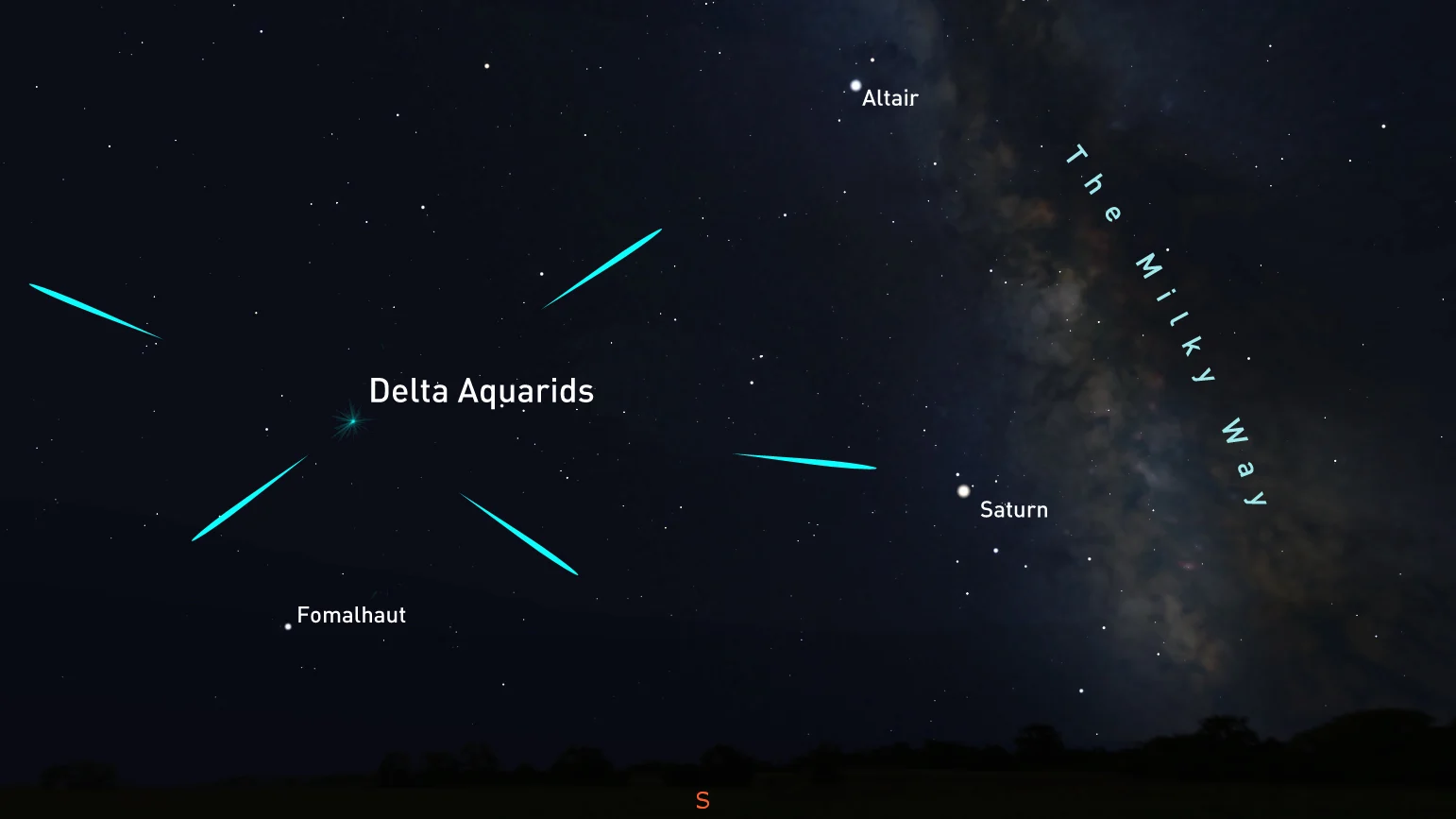
The location of the Delta Aquariid meteor shower radiant, at 1:30 a.m. local time, on the night of July 28-29, 2019. Credit: Stellarium/Scott Sutherland
Of the two summer meteor showers predicted here, this is definitely one to check out when you are at the cottage, far, far away from any major sources of light pollution!
August 12-13 - Peak of the Perseid Meteor Shower
By far the best of the summer meteor showers, and one of the best of the entire year, the Perseid meteor shower runs between July 17 and August 24, and reached its peak on the night of August 12-13.
The Perseids can deliver over 100 meteors per hour under ideal conditions during its peak. This ramps down, to maybe 60 per hour the night after, 50 per hour the night after that, and so on, until it settles down to around 10 per hour by the end of the week.
So, if you couldn't get outside or your skies were cloudy, it's worth another try tonight and the next few nights to come.
If cloud cover in your area co-operates, the pre-dawn hours of Wednesday will still be a good time to catch a glimpse of the show.

The Perseids also has the distinction of being the one annual shower with the greatest number of fireballs - very bright meteors that are as bright as, or brighter than, the planet Venus.
WATCH BELOW: PERSEID FIREBALL METEOR CAPTURED ON CAMERA
This year is not the best for viewing, unfortunately, due to Wednesday night/Thursday morning's Full Moon being so close to the peak of the shower. The added 'light pollution' from the bright Moon will wash out many of the dimmer meteors from this shower, but the brighter ones should still shine through.
The one benefit is that the Perseid radiant (the point in the sky where the meteors appear to radiate out of) is always off to the northeast, while the Moon is to the south. So, a viewer can usually just set their back to the Moon, keeping its light out of their eyes when trying to spot meteors.
The best time to view this shower is in the hours after midnight to before dawn.
TIPS FOR WATCHING A METEOR SHOWER
First, some honest truth: Many people who want to watch a meteor shower end up missing out on the experience, unnecessarily.
I hear this kind of scenario far too often: Someone gets excited to watch the upcoming meteor shower. They've been hearing all about it. They wait until the night in question. When it gets dark, they just step outside, directly from the lighted interior of their house, look up into the light polluted sky from their urban or suburban backyard, and expect to see hundreds of streaks of light streaming across the sky. When they don't see that happening, or they maybe see one meteor, they immediately go back inside, disappointed.
It's not entirely the person's fault. They could have experienced a really cool space event, but in most cases, they simply hadn't been told what they need to do, to properly watch the event, or they did not know what to expect.
So, to help avoid this scenario, going forward, here is a basic guide on how to get the most out of meteor shower events.
First off, there's no need to have a telescope or binoculars to watch a meteor shower. Those are great if you want to check out other objects in the sky at the same time - the Moon, Jupiter, Mars, nebulae, galaxies, etc. When watching a meteor shower, though, telescopes and binoculars actually make it harder to see the event, because they restrict your field of view.
Here's the three 'best practices' for watching meteor showers:
Check the weather,
Get away from light pollution, and
Be patient.
Having clear skies is very important for meteor-spotting. Even a few hours of cloudy skies can ruin an attempt to see a meteor shower. So, be sure to check The Weather Network on TV, on our website, or from our app, and look for my articles on our Space News page, just to be sure that you have the most up-to-date sky forecast.
Next, you need to get away from city light pollution. If you look up into the sky are the only bright lights you see street lights or signs, the Moon, maybe a planet or two, and passing airliners? If so, your sky is just not dark enough for you to see any meteors. It's possible you might catch a bright fireball, but there's no guarantee, and those are typically few and far in-between. So, get out of the city, and the farther away you can get, the better!
Watch below: What light pollution is doing to city views of the Milky Way
For most regions of Canada, getting out from under light pollution is simply a matter of driving outside of your city, town or village. Once you're out from under the dome of city lights, a multitude of stars becomes visible above your head. In some areas, however, such as in southwestern and central Ontario, and along the St Lawrence River, the concentration of light pollution is too high.
Getting far enough outside of one city to escape its light pollution, unfortunately, tends to put you under the light pollution dome of the next city over. In these areas, there are dark sky preserves, however, a skywatcher's best bet for dark skies is usually to drive north and seek out the various Ontario provincial parks or Quebec provincial parks. Even if you're confined to the parking lot, after hours, these are usually excellent locations from which to watch (and you don't run the risk of trespassing on someone's property).
Sometimes, based on the timing, the Moon is also a source of light pollution, which washes out all but the brightest meteors. We can't get away from the Moon, so in these situations, we can just make do, as best we can.
Once you've verified you have clear skies, and you've gotten away from sources of light pollution, this is where having patience comes in.
For best viewing, it is crucial that you give your eyes time to adapt to the dark. Typically, somewhere between 30-45 minutes of adjustment time is optimal. Just as a warning, if you skip this step, even if you follow the rest of the steps, above, you are going to miss out on a lot of the action.
During this adjustment time, avoid all bright sources of light. That includes overhead lights, car headlights and interior lights, and especially cellphone, tablet and computer screens. Any exposure to bright light during this period will cancel out some or all the progress you've made, forcing you to start over. Shield your eyes from light sources, and if you need to use your cellphone during this time, set the display to reduce the amount of blue light it gives off, and reduce the screen's brightness as much as possible. Also, it may be worth finding an app that puts your phone into 'night mode', which will shift the screen colours into the red end of the light spectrum, which has less of an impact on your night vision.
You can certainly look up into the starry sky while you are letting your eyes adjust. You may even see a few brighter meteors as your eyes become accustomed to the dark. If the Moon is shining brightly in the sky, turn so that you have your back to it.
Now, once you're in a good dark place, under clear skies and your eyes are adapted to the dark, look straight up. The graphics presented for meteor showers often give a 'radiant' point on the field of stars, showing where the meteors appear to originate from, but meteors can flash through the sky anywhere above your head. So, if you focus only on the location of the radiant, you may miss many of the meteors, as they flash through the sky behind you, or beyond the edges of your peripheral vision.
Bring a chair to sit in, or lean back against the side of your car, and tilt your head back, so you can take in as much of the sky at once. Then, just wait for the meteors to show up.
Now, as for what to expect, meteor showers are always accompanied by a number, known as the Zenith Hourly Rate or ZHR. This is the number of meteors expected per hour, of all brightnesses, when viewed under absolutely ideal conditions - perfectly clear skies, no light pollution, and with the meteor shower radiant directly above the observer (at the 'zenith').
Since the actual viewing conditions almost NEVER match those ideal conditions, the number of meteors an observer will realistically see is maybe 50-60 per cent of that ZHR value. So, for example, with the Perseid Meteor Shower, which has a ZHR of around 100 meteors per hour, anyone that has observed the above recommendations will probably see about 50-60 meteors per hour, or one every minute or so.
